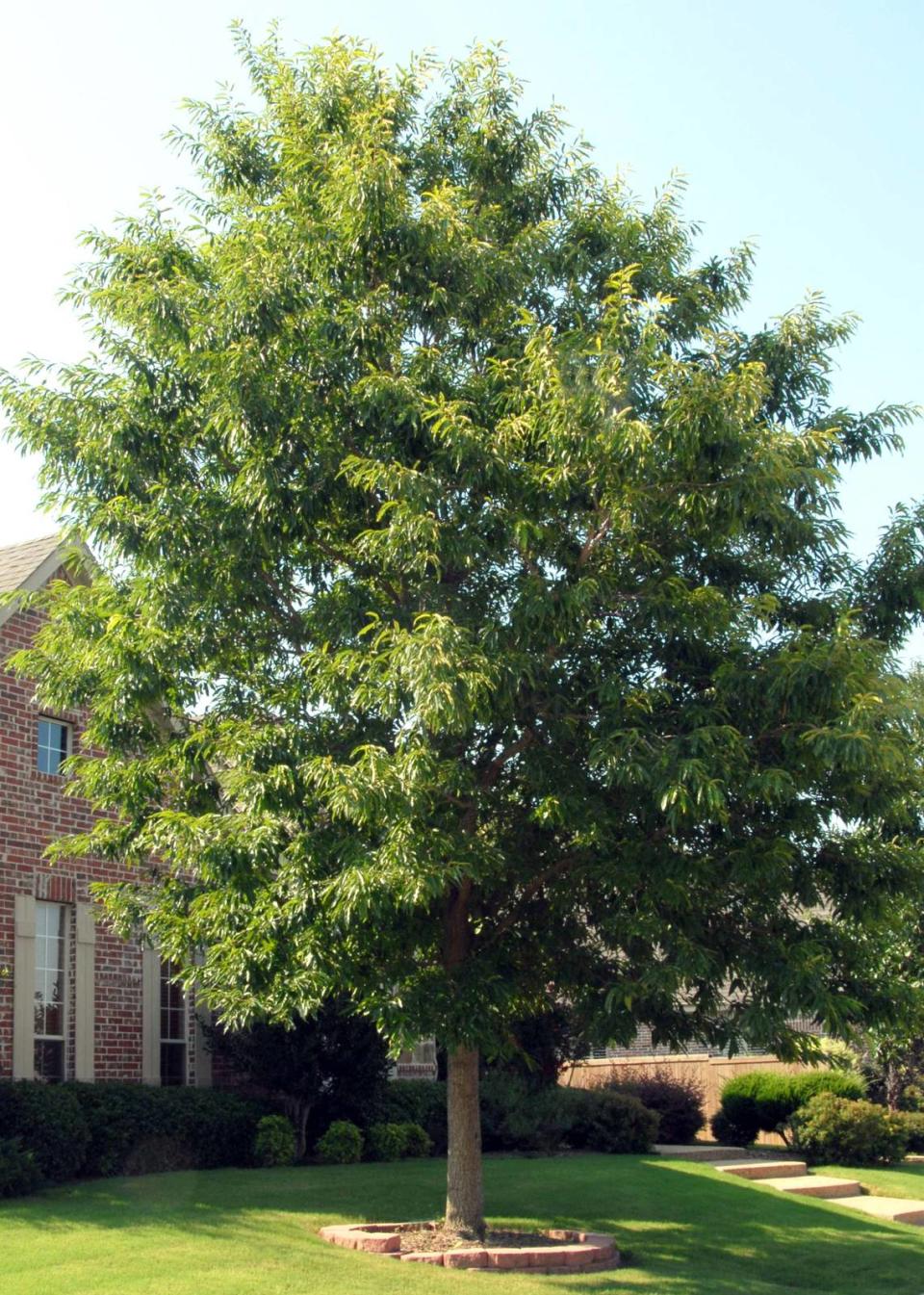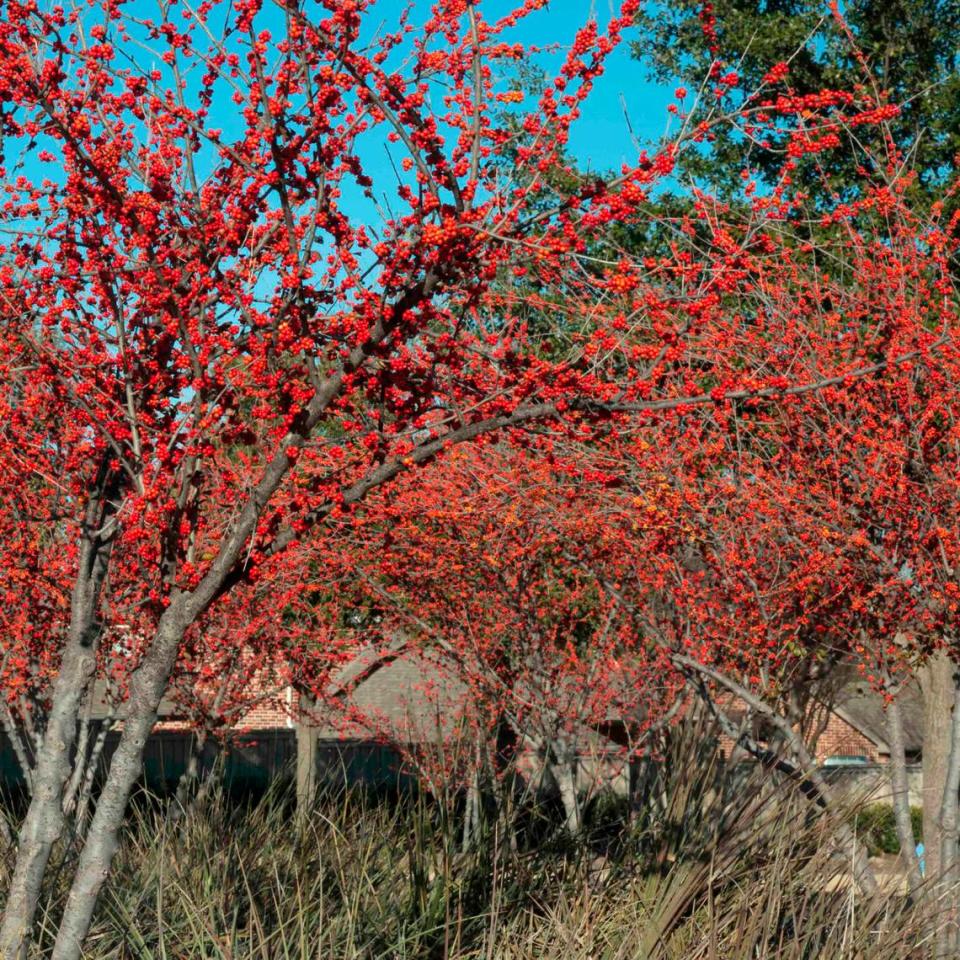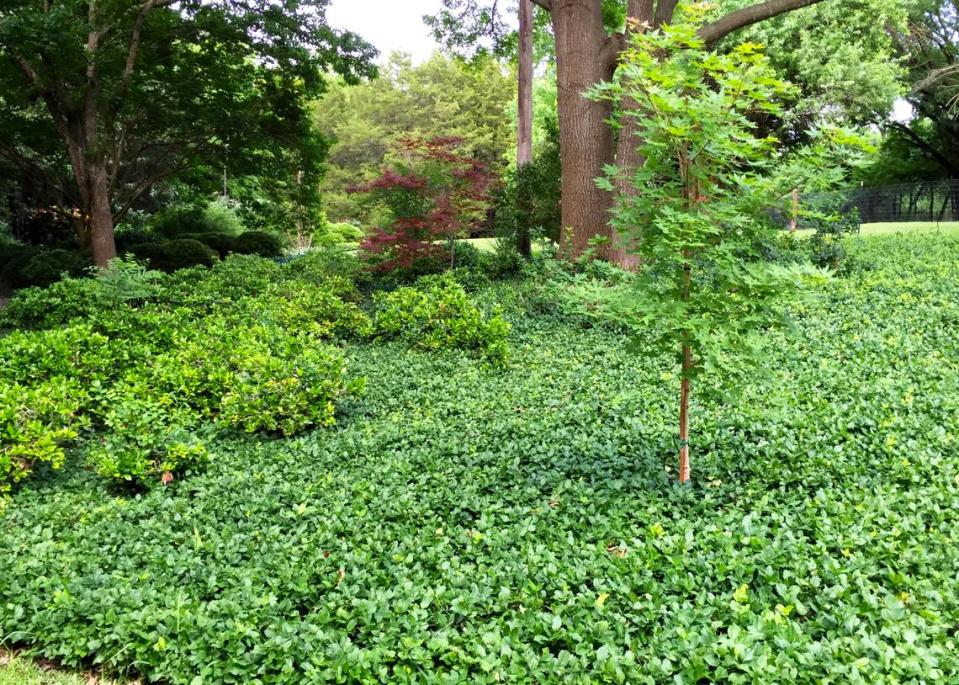Why these plants are favorites for North Texas gardens and landscapes
I’ve been in this horticulture business here in Fort Worth/Dallas since before an ad man coined that term “Metroplex” back in 1971. I’ve seen a lot of plants come, and I’ve seen many of them go. Several have gone on to become my favorite plants of their types, and I’d like to share three of them here today — who they are and how I met them.
Chinquapin oak (Quercus muehlenbergii). It’s always struck me as odd that this local native hasn’t been more popular. It’s found in river bottoms all across North Central Texas and beyond, often growing alongside the better-known bur oaks.
Everybody’s friend, the late Benny Simpson, research horticulturist with Texas A&M in Dallas, officed in the next building from where I worked in my time with the A&M Extension Service. Benny traveled far and wide to bring native plants back for trial in the Blackland Prairie soils there on Coit Road. That’s where I saw my first Chinquapin oak in one of his plantings. We talked about the tree, and he sent me up to Illinois Bend on the Red River north of Saint Jo to see it in real life and to collect acorns. I did exactly as told, and I came home with hundreds of acorns and kneecaps filled with grassburs.

At maturity Chinquapin oaks are large, oval to rounded trees to 50 feet tall and 40 to 50 feet wide. They have leaves that would cover your hand, very dark green, oval and toothed. The leaves are light green on their reverses, giving them a nice contrast in color. Fall shades are yellow and not especially showy, but the gray, shaggy bark is very attractive.
I rate Chinquapin oaks as equal to live oaks, Shumard red oaks, bur oaks, pecans, cedar elms and Chinese pistachios as our best choices for large shade trees for North Texas.
Warren’s Red possumhaw holly (Ilex decidua “Warren’s Red”). As long as I’m crediting Benny Simpson, I might as well keep the ball rolling. I looked out my window there at the A&M Center on Coit Road one day and Benny had planted one of these beauties about 20 feet from the building. I’d grown up knowing the plant in Brazos County, although I’d often heard to it referred to as “deciduous yaupon” because it has a similar appearance, just with leaves that come off in the fall.
What set Benny’s plant apart, though, was its crop of very large, very red fruit. Half again as large as regular possumhaw berries and 10 shades redder (no hint of orange).
I made a bee line down to Benny’s desk to ask what it was, and that’s when he told me about “Warren’s Red.”
“From the old Warren’s Nursery in Oklahoma City,” he said. It seems they introduced several fine plants, including the popular “Oklahoma” redbud.
“Warren’s Red” possumhaw grows to 12 feet to 14 feet tall and it forms a clump of trunks not unlike a tree-form crape myrtle that spreads 10 or 12 feet wide. It is a female selection, so all plants will bear fruit, but they must have another male possumhaw blooming somewhere within a few hundred yards to provide pollen. That is rarely a problem.

You have very likely seen the native possumhaw hollies growing on North Texas hillsides. Their fruit starts to show color as weather turns cold in November, and the berries will hold until early spring. They’re a favorite food of wild birds, so watch for them coming soon to a fence row near you. Then compare those fruit to the ones you see on “Warren’s Red” and you’ll understand why you want the improved selection.
I recommend “Warren’s Red” possumhaw holly as an exclamation point in the landscape. I use it where I’d plant a tree-form crape myrtle, either out from the corner of the house or 12 or 15 feet away from the front door. It’s also handsome anchoring a spot in the perennial garden where things can look pretty bleak when everything else shuts down for the winter. Surround it with dark green evergreen shrubs or groundcover and you’ll have a wonderful combination.
Purple wintercreeper euonymus (Euonymus fortunei “Coloratus”). I needed a groundcover for a small bed at my mom’s house back in the mid-1980s. I bought two flats of this plant from a local nursery. I hadn’t seen it used here, but it looked like it would be fine.
I used one flat in Mom’s bed, and I brought the other one home. I set it down on the ground outside the door to my greenhouse where I’d douse it with water every time that I watered my plants.
I got busy and never got those pots planted. A couple of years passed and I decided to lift them and give them a decent trial at our house.
To my surprise, the plants had rooted into the ground. There was no way to pry them apart. They had grown solidly together. My only way to use them would be to clip them off at the edges of the pots and leave the plants growing right where they had rooted. No bed prep whatsoever. What they got with our native soil was all they would ever get. Those original plants now cover several hundred square feet and they look terrific.
So, in shorter words, I backed into victory on that one. I found a plant that was eager to grow in North Central Texas, and I’ve been recommending it for almost 40 years since. It’s been rewarding to see my “research” help it turn into one of our most popular groundcovers locally. Many of us prefer wintercreeper to the oft-frozen Asian jasmine.


